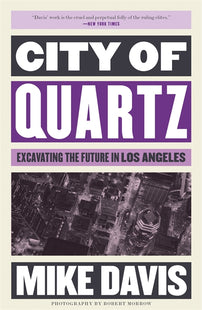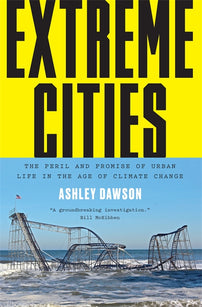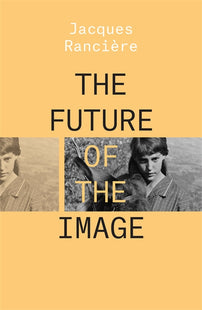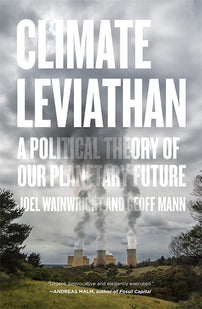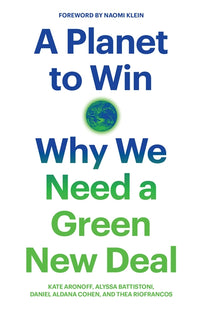Deserted cities of the heart
The past few weeks have seen images spreading around the internet of empty streets and deserted cities. But what do these images tell us about the present moment, and what does their cultural value suggest about our relationship to the current crisis?

In Liu Cixin’s sci-fi novel The Three-Body Problem, an astrophysicist, radicalized by reading Silent Spring, and having been persecuted during the Cultural Revolution, decides the human race is irredeemable and sells it out to an alien invader. I started the book a few weeks ago; now it has become grimly timely. Demagogues would now have us believe that the novel coronavirus is an alien invasion force while also trying to sell millions of us out to it as quickly as possible. Some have made a comparison to the risk-reward calculus of driving, arguing that governments don’t force people to drive slow in order to save lives. So why should they prevent us from endangering ourselves and others? Lives must be sacrificed to road wrecks to maintain a certain rate of return. As the skies clear dramatically over cities that are accustomed to thick smog, one can imagine the demagogues making a similar argument about the air pollution that already ruins lungs and truncates lives: All coronavirus does is accelerate the process — fast capitalism in its apotheosis.
But the eschatological fantasies of Liu’s anti-humanity cadres are also echoed, however faintly, in the celebration of abandoned urban spaces and brightened city skies as some sort of coronavirus consolation. These are not like the images of empty grocery shelves, caused by those merely participating in the panic. They evoke something more sedate, serene. Earlier in the crisis, when Italy was the focal point, the sudden clarity of Venice’s canals were widely discussed with wonder. Without boat traffic, the sediment in them settled, making it possible to see the marine life they host. CNN quoted a random person saying, “What a marvel this Venice was; this virus brought something ... beautiful." That sentiment was echoed on Twitter feeds that shared video of the canals, the fish newly visible. Implied in this sharing was a message about the resilience of nature and humanity’s fundamental tendency to interfere rather than participate in it: See how nice and pure the world is without tourists, without other people living their lives by their own priorities and privileges? This is the way I like to see the world, with no one else around to see it. The way things “really should be” is the way they are when human activity is subtracted. The canals are supposed to be clear and stagnant. To borrow a phrase from writer Mark O’Connell, describing the butterflies in the Chernobyl Exclusion Zone, “It is all quite lovely, in its uncanny way: The world, everywhere, protesting its innocence.”
[book-strip index="1" style="display"]The clear canals may be taken as emblematic of a broader silencing to come. In an essay for the Point, philosopher Justin E.H. Smith wrote, “We have little idea what the world is going to look like when we get through to the other side of this, but it is already perfectly clear that the ‘discourses’ of our society, such as they had developed up to about March 8 or 9, 2020, in all their frivolity and distractiousness, have been decisively curtailed, like the CO2 emissions from the closed factories and the vacated highways.” He concludes that if an invading alien force came to Earth, there is no reason to believe that it would even have any interest in humanity (even to exterminate it), given that it's only our own hubris that leads us to believe that we are “this planet’s true and legitimate representatives.”
The broad fascination with the images of empty cities — as in this New York Times photo essay, for instance — is in part a fascination with that hubris, but more as a means of fetishizing it rather than overcoming it or rejecting it. Cities appear in these images not as practical commercial spaces but as monuments to humanity’s transformational power in the abstract, something that doesn’t require collaboration, competition, or conflict but just seems just to exist as a natural force. They are seen as especially beautiful when rendered useless, but that’s not because they remind us of our own uselessness or insignificance. Instead, the sense of personal impotence may be dispersed in majestic images of the vacated cathedrals of civilization.
At the same time, cities are given the deserted quality that has often been reserved for conventional natural landscapes, where an absence of people serves as a signifier of “naturalness.” Landscape paintings typically tend to mask whatever alterations humans have made to the land so a particular perspective can appear as given, as inherent or inevitable. How the land is framed is both foregrounded and effaced: A vantage point is isolated and idealized as characteristic, as typical, as frameless.
The photos of people-less cities extend that mood of givenness to urban landscapes, suggesting how they endure without us or despite us. We can regard cities not as purpose-built environments, but as natural ones to which humans have adapted, much like the species at the bottom of the ocean have adapted to life without light. From that point of view, humans are othered to themselves, becoming a species for remote observation. By looking at the images, we can see ourselves as exempt, as belonging to an evolution beyond that, the contours of which are emerging in the strange dislocations we are now experiencing in everyday life.
Our ability to appreciate these images doesn’t underscore our ultimate harmony or interconnection with the natural world and the life that purportedly re-emerges when the highways are finally vacated. Rather it lets us use mediation (our ability to consume representations) to rearticulate our exceptionality. We can assume the subject position of the camera and pretend that makes us immune to being objects in the world.
The deserted cities allow us to imagine that we’re in a comfortable position from which to enjoy them — that the erasure of humanity doesn’t actually include us. As this piece by Cherine Fahd and Sara Oscar notes, “The viewer is looking at a representation of the scene, not the scene itself, from a position of far-off comfort.” This becomes obvious when you actually walk around a deserted city, which is certainly uncanny but inspires more grief than delight. The images let us consume a distance from the emptiness as much as the emptiness itself. Wherever we are can then feel more full.
[book-strip index="2" style="display"]In an essay that accompanied the New York Times’s collection of images, Michael Kimmelman suggests that the photos are hopeful because in their eerie, ruin-porn-like emptiness they “remind us that beauty requires human interaction.” But that reading strikes me as somewhat idealistic; he dismisses what seems to me their more fundamental allure, that they offer a vicarious experience of “the wonder of bygone explorers coming upon the remains of a lost civilization.” That is, they give viewers a kind of imperial transcendence, a sense of sublime survival as a kind of conquering. “Beauty” might be, as Kimmelman claims, a thing we “bestow” with social interaction, but the images remind us also that the consumption of beauty can be had unilaterally, placing us at a perspective that provides pleasure precisely by protecting us from complicity or vulnerability.
What these images of empty cities remind me of are photos of dead malls that have served over the past decade or so as symbols of the oft-predicted “retail apocalypse.” I spent lots of time working and hanging out in a mall as a teenager, so these sorts of images have always had a bracing form of anti-nostalgia for me, like seeing your childhood home being bulldozed. But I also tend to read the dead-mall images as metonyms for the dead end of consumerism. They depict not the absence of commerce but its negation.
Many have predicted that one of the lasting effects of the pandemic will be the end of conventional retail, because everyone will have gotten fully acclimated to home delivery and its conveniences. But this prediction seems premature; it’s impossible to tell just how drastically our everyday life and our perception of what is convenient will be reworked by the experience of extended isolation.
It's tempting to treat the images of deserted cities as symbols, as evocations, as metaphors, as prophecies, but the most compelling and troubling thing about them is that they can be taken as just direct representations of the world outside as it is. Our old lives are over; where we lived are ghost towns. The photos seem to document something historic and exceptional that we lived through, only we're still living it. There is an apparent finality to total emptiness that might help us pretend that the crisis is already over, and the world is there, where we left it, and not in the social relations and the sorts of choices we're now facing to try to remake it.
Rob Horning is an editor at Real Life, an online journal about technology and everyday life.
[book-strip index="3" style="display"]
